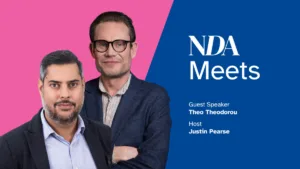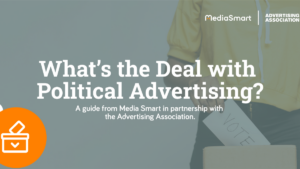by Colette Munnelly, Senior Solutions Engineer, Xandr
Over the years consumer habits have changed as new technologies were introduced and new advertising formats became available. Tech and social media giants took the world by storm and today, around 80% of global digital ad spend goes to these walled gardens despite people spending half their time outside of these ecosystems on the open internet.
At the same time a societal shift has taken place. Consumers now care deeply about the ethical standards a brand holds, their morals and support of diverse groups. This imbalance of ad spend means that advertisers are failing to reach audiences in the online places they choose across the open internet, and niche publishers are missing out on the investment they need to deliver free premium and importantly diverse content.
Tools exist for brands to easily deliver on their diversity promises while being authentic and genuine in their delivery. With this in mind, it is clear that advertisers now have no reason not to reconsider where their ad spend goes.
Diversifying media plans
One of the biggest ways a media plan can be diversified is through advertising on minority-owned publications. The first step is to look at your audience, understand them and consider where their preferences are when it comes to consuming content. This doesn’t just help to create a diverse media plan for your brand, but also shows support for the diverse and representative open web your audience enjoys.
Next, you must ensure that your approach to keyword blocklists and brand safety reflect the world we live in. Keyword blocklists can often end up blocking brand-safe content that communities engage with. Brands should be looking to embrace socially conscious messaging and values, auditing their blocklists in the DSP, or shifting focus to more contextually progressive solutions and removing blocklists altogether.
Telling the right story
Having the blocklists in check is just part of the process. The creative execution of a plan is just as important. Your message should be genuine, authentic, and personalised to the audience being targeted, particularly when delivered on a minority-owned publication. Failure to do so may result in backlash from consumers which can be detrimental to your brand’s reputation. If in doubt, seek advice. It’s fair to say that no one knows their community quite like those whose job it is to reflect and write for them. Media owners are well placed to help advise how best to authentically interact and where a brand’s messaging will resonate most.
To be genuine and authentic, brands should be guaranteeing that their creative teams are as diverse as the audiences they’re trying to reach. Representation is just as significant in decision-making positions as it is within the media itself. Remember consumers are extremely savvy when it comes to a brand just posturing to boost sales, and they’re unlikely to buy from any business that doesn’t genuinely align with their social views.
Support the open internet
As with everything in the digital advertising world, personalisation requires testing. This will help you identify what types of creatives resonate most with your target audience. For example, a brand may want to reach LGBTQ+ publications. After carefully selecting which properties align well, the easiest way to do this would be to combine the media properties into one deal ID. By doing so, you can increase the efficiency of buying inventory across those titles and, in turn, make it easier to test and learn at scale.
The curation of titles in this way has the added benefit of transparency allowing you to see where your ads are running and know exactly how much money you are putting into minority-owned publications. Let’s not forget that money flow into the more niche areas of our world is the only way to keep the open internet operating in the way it does. Most of the internet exists thanks to advertising. Take that away, then consumers will have to pay to access content which, for a lot of people given the current economic crisis, may not be financially viable. It will force people to be selective about the publications they subscribe to, and we’ll see a lot of smaller publications struggle to achieve the necessary funding to survive when up against the bigger titles with a broader range of content. The ad-funded model of the open internet not only means diversity of content and voices, but it also means diversity for the audience.
It’s time for brands to truly align their diversity strategy across their entire business, rather than being performative in their actions. A diversity strategy isn’t just about hiring processes or ensuring diversity in the advertising workforce, or even about supporting the publications owned and run by diverse communities. It is now a part of ensuring the freedom of choice consumers have today across the open internet, and unlocking the true potential for your brand to reach a much wider audience.









